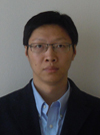

Northwestern University
United States


As video sensors are pervasive, it is desirable to have "machines that can see", i.e., machines that are able to analyze, interpret and understand video inputs automatically. Making such machines has become one of the driving forces for the next generation of computers. They will be widely applicable to save our humans from tediousness, to extend our human visual capacities, and to reduce the errors that our human vision may make. Emerging applications range from intelligent video surveillance, medical image analysis, multimedia databases, autonomous robots, intelligent human-computer interfaces, etc.
Perceiving motion is one of the most critical functionalities for the human vision system. Thus, machines that can see should be able to sense and analyze motion as well, so that targets can be located and tracked, their motion can be recovered, and their actions can be recognized, and their activities can be interpreted. In this talk, I will present some on-going research in my group, including face/pedestrian detection, robust and persistent visual tracking, complex visual motion analysis, and video data mining, with several exciting applications.
Perceiving motion is one of the most critical functionalities for the human vision system. Thus, machines that can see should be able to sense and analyze motion as well, so that targets can be located and tracked, their motion can be recovered, and their actions can be recognized, and their activities can be interpreted. In this talk, I will present some on-going research in my group, including face/pedestrian detection, robust and persistent visual tracking, complex visual motion analysis, and video data mining, with several exciting applications.

